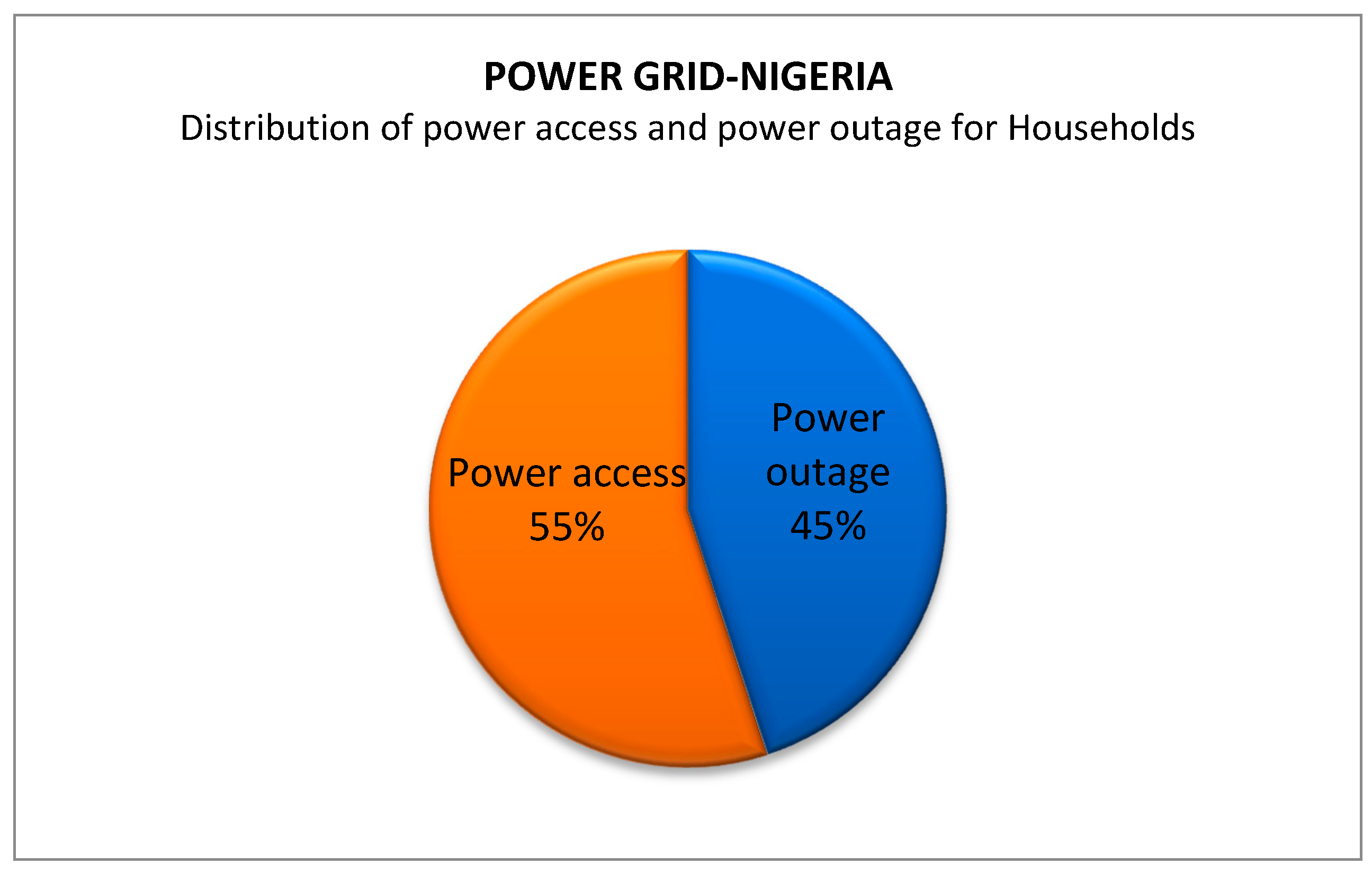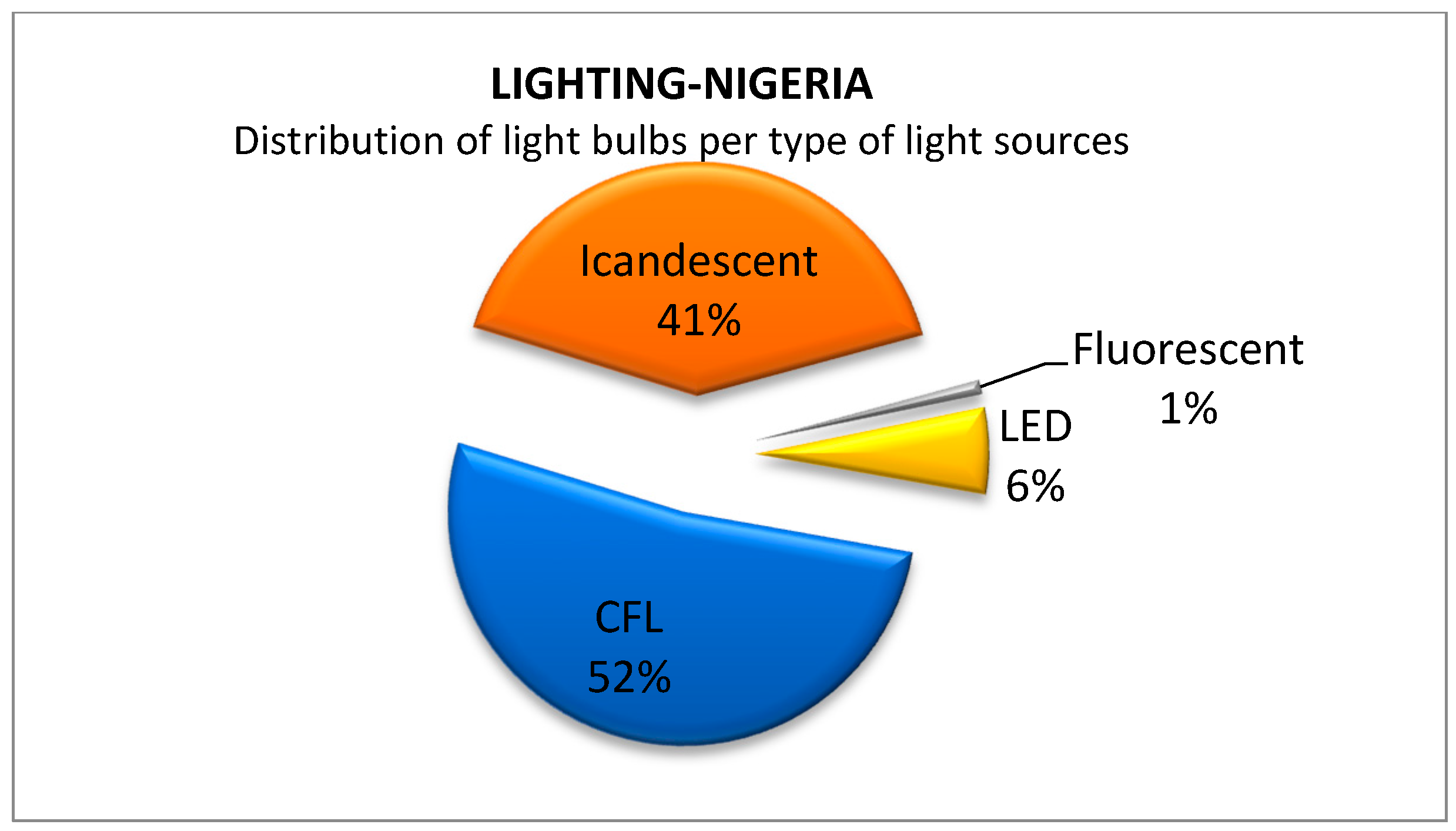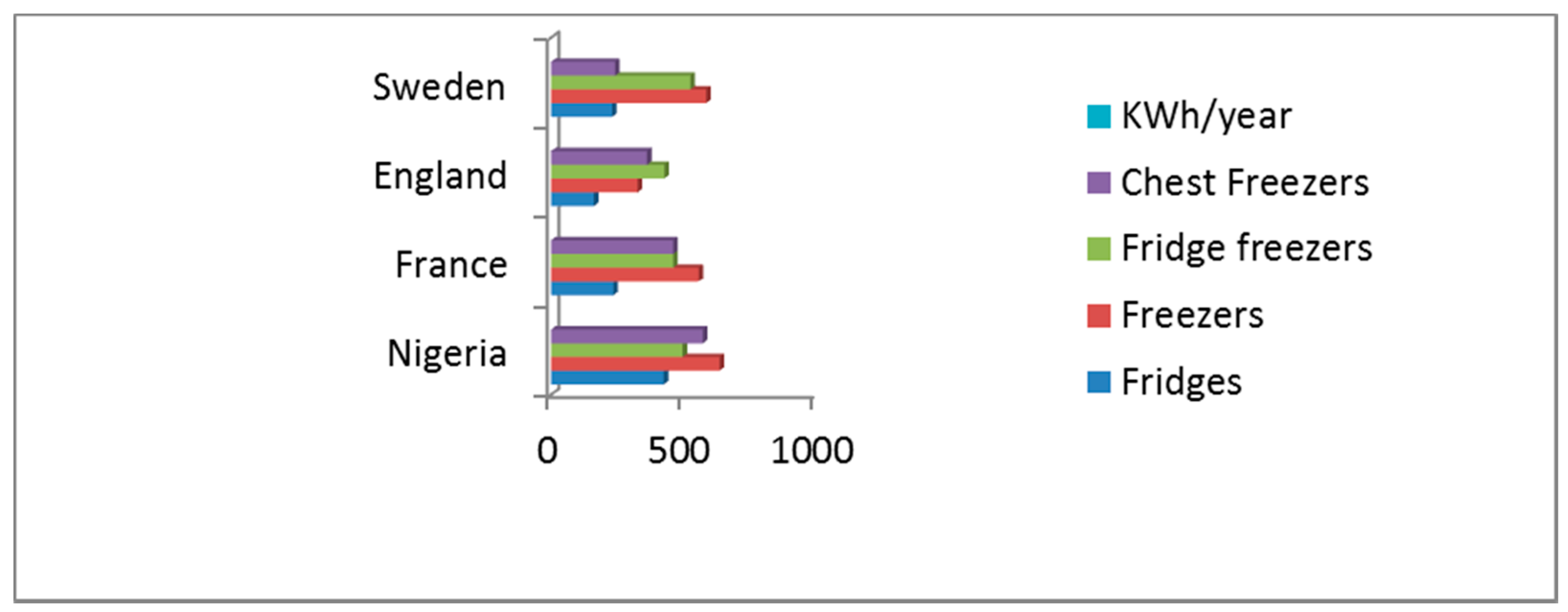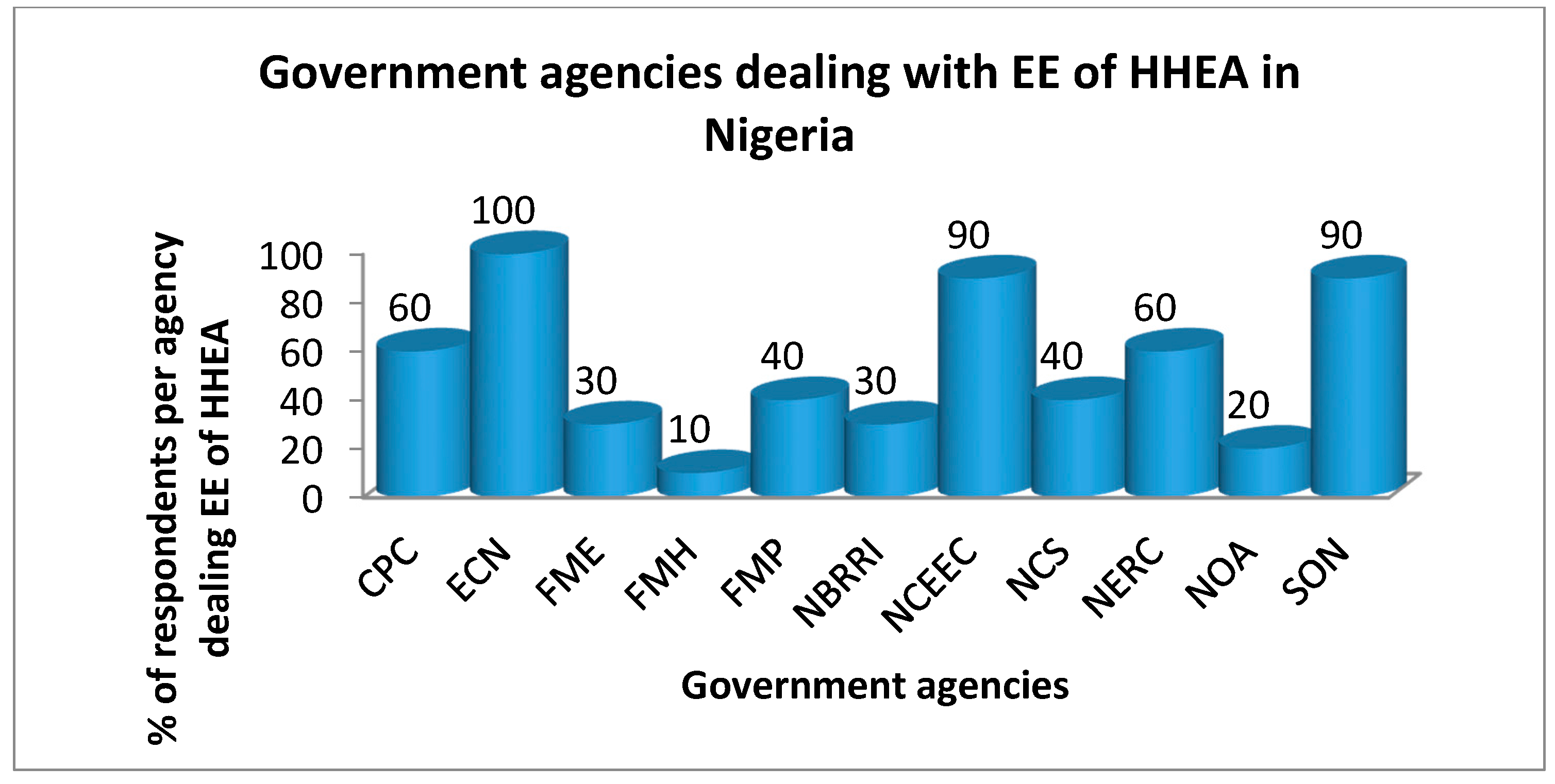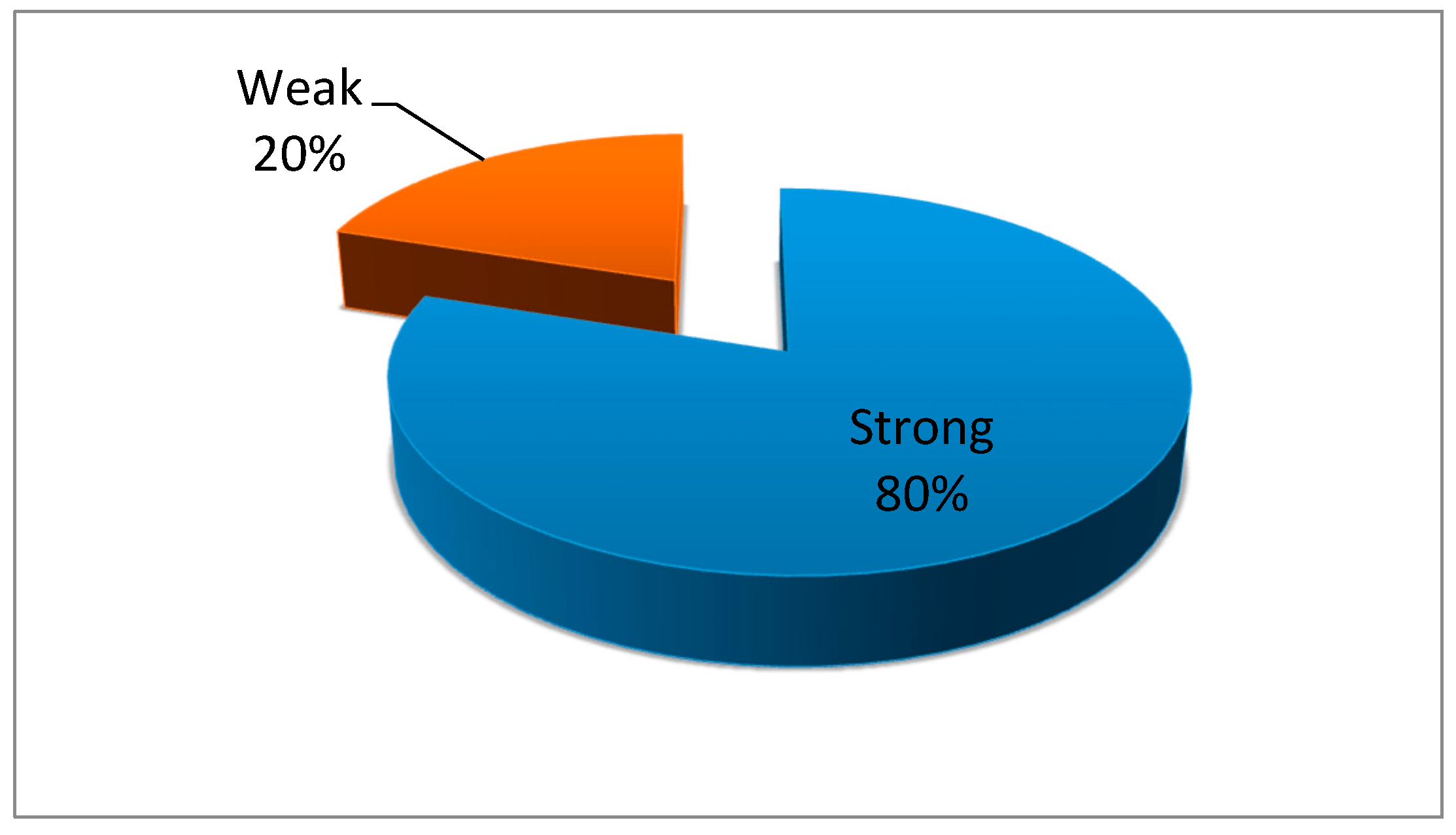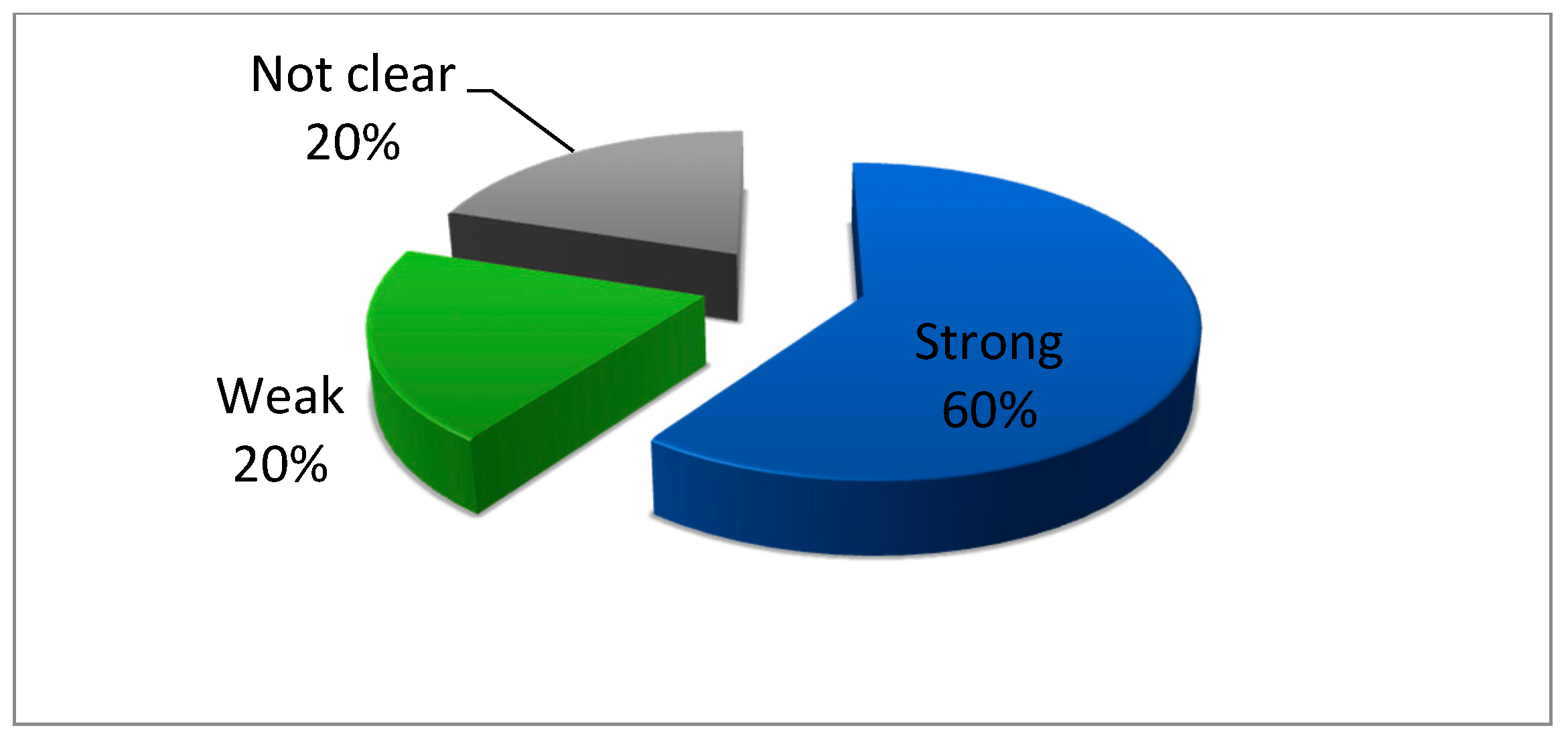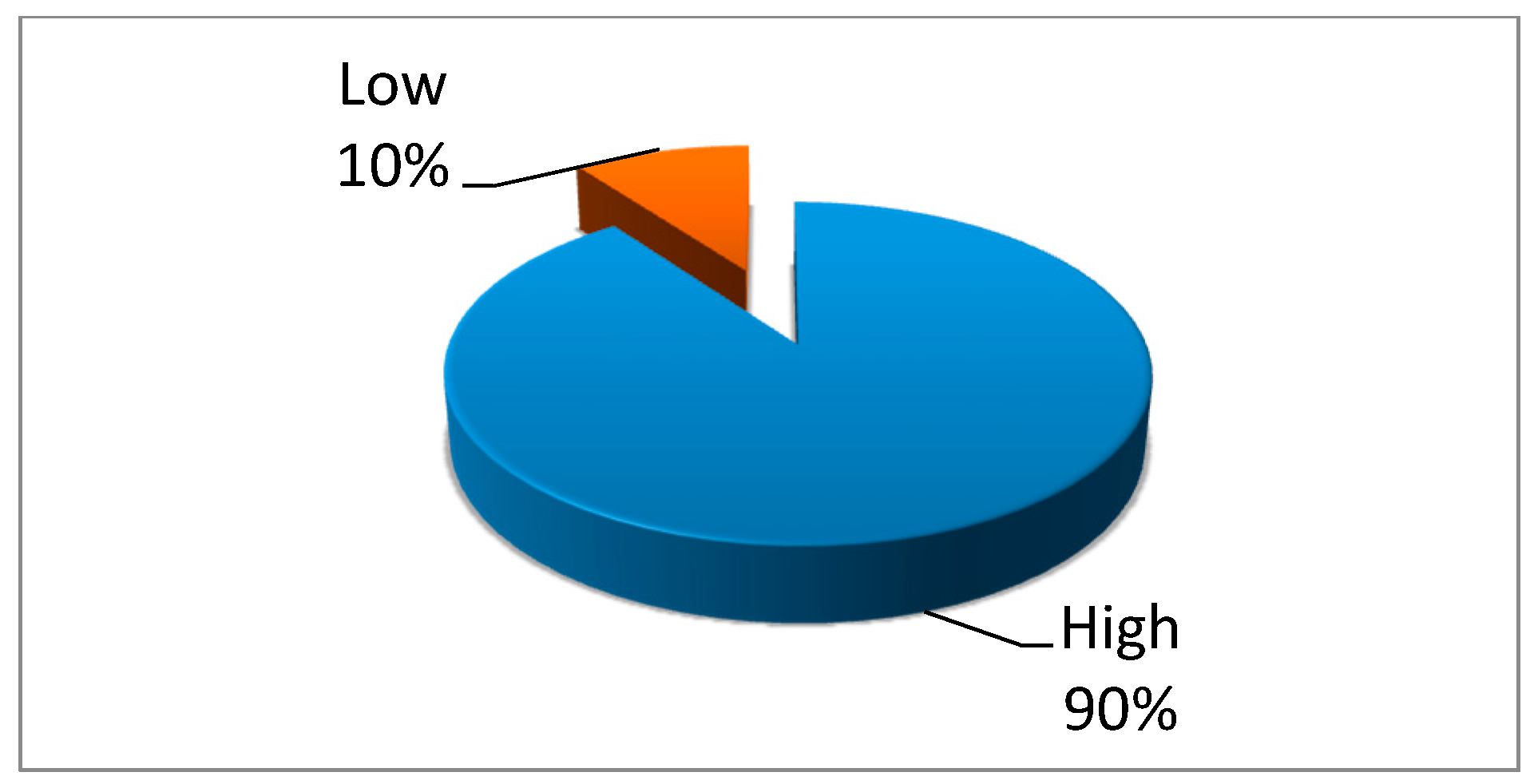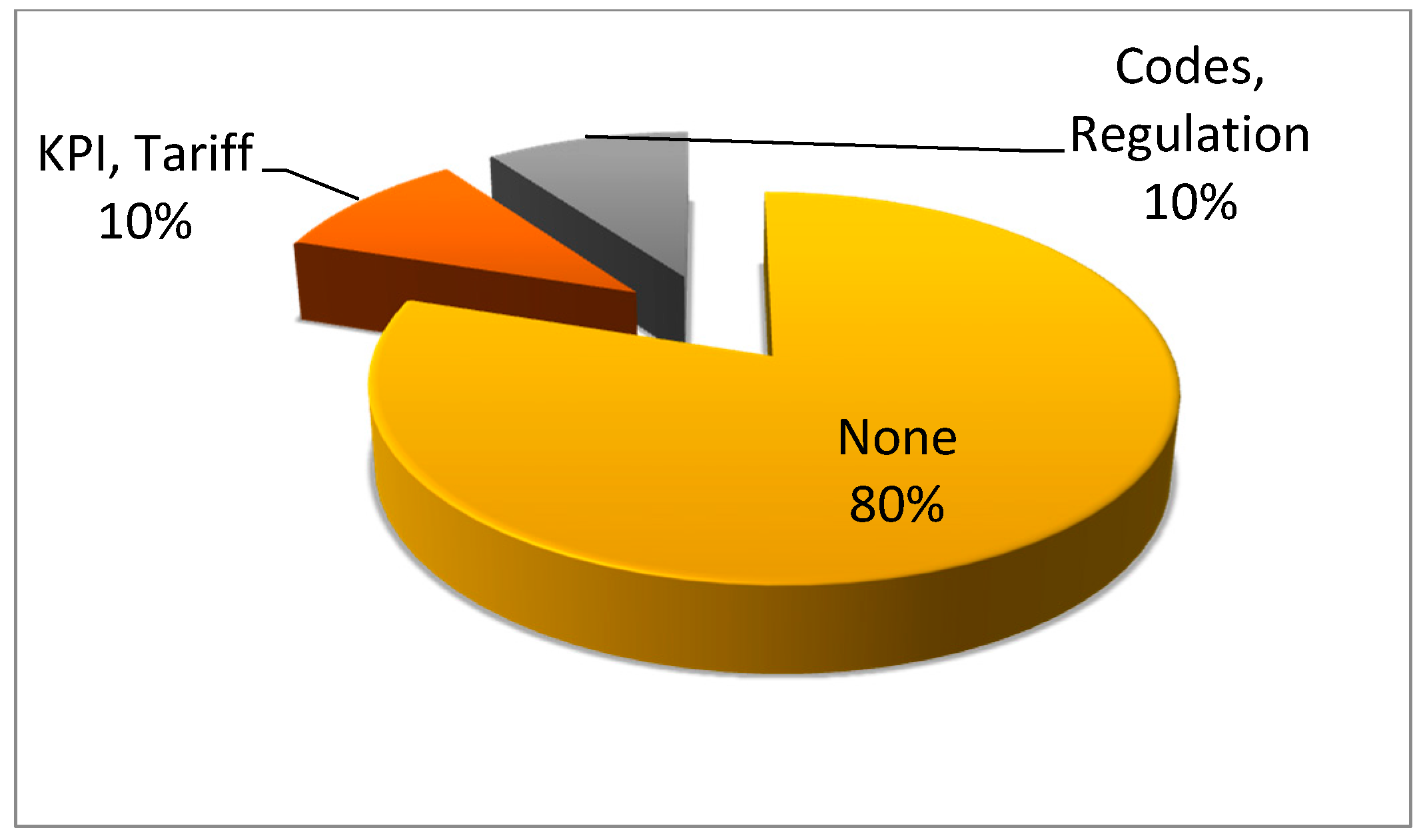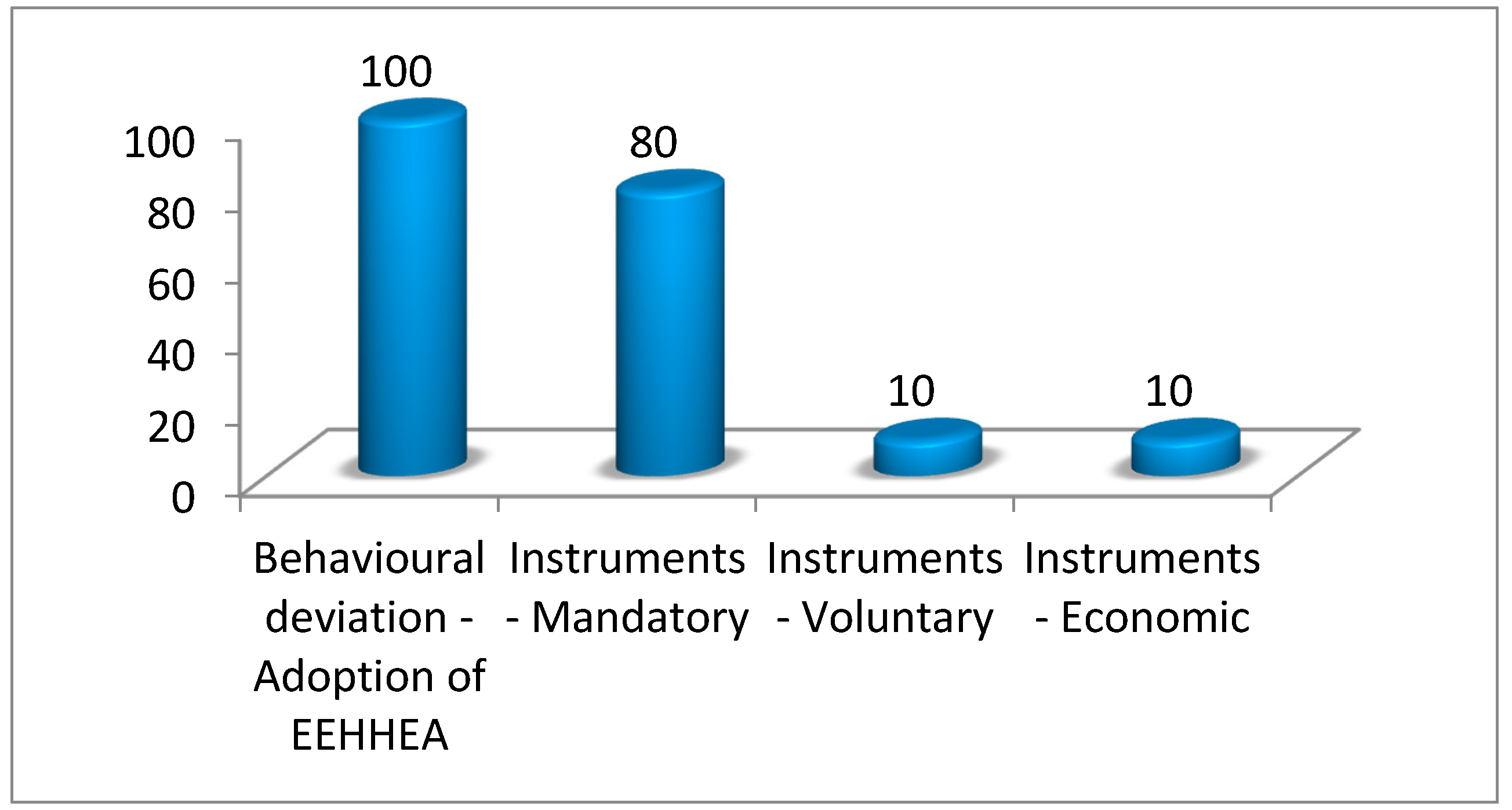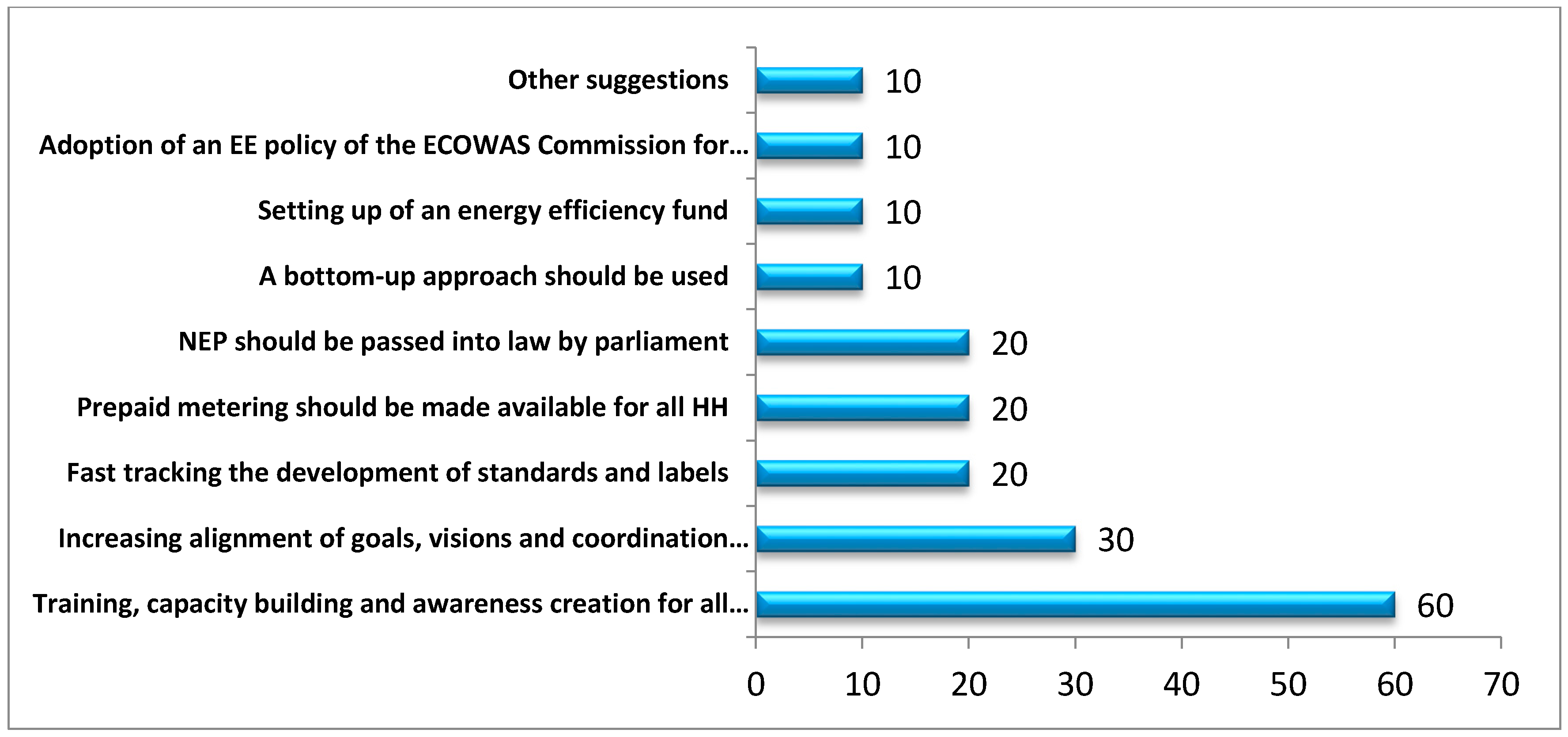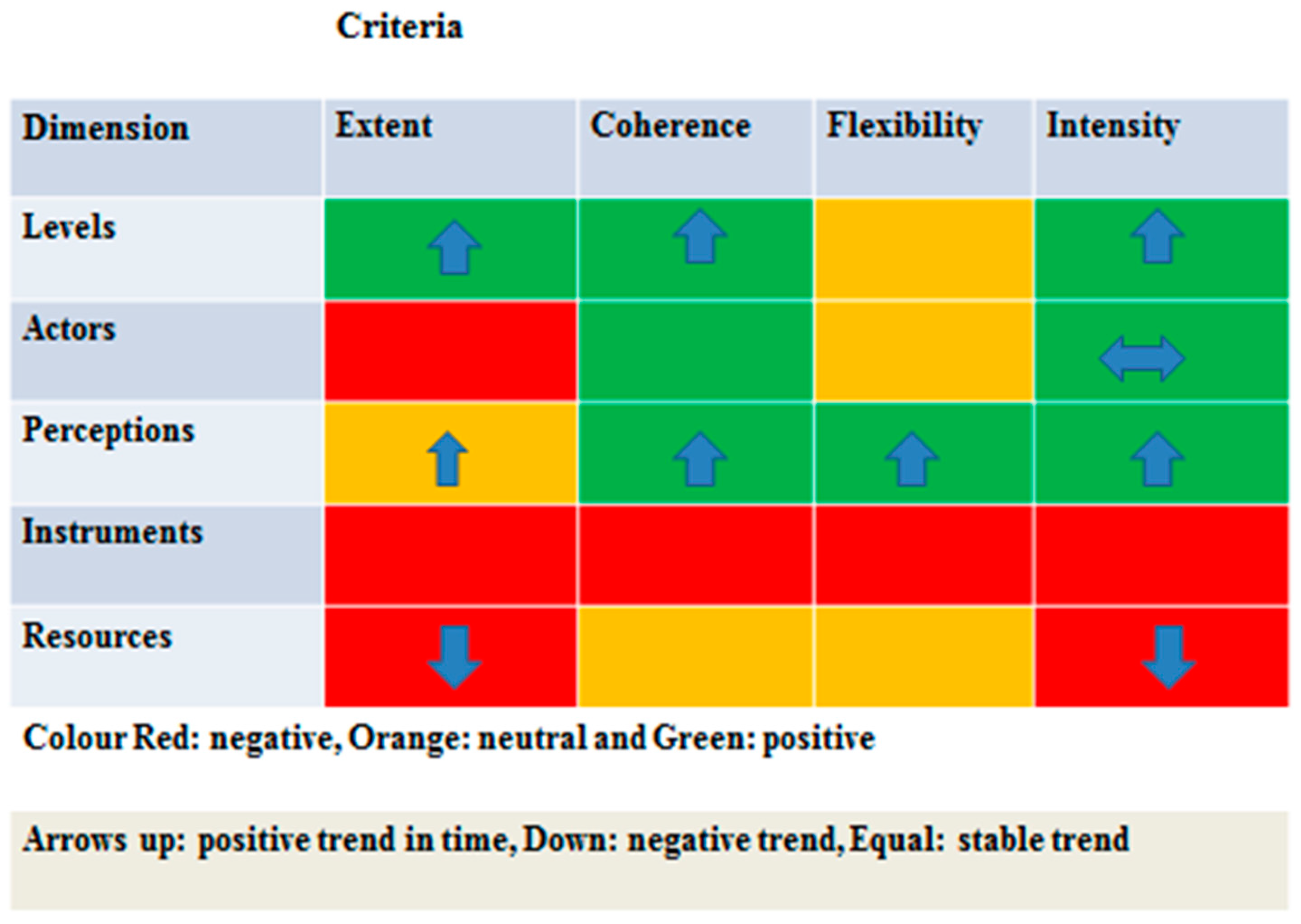1. Introduction
With a projected population of about 165 million [
1] and a GDP growth of 5.09%, 6.66%, and 7.41% for the years 2011, 2012, and 2013 respectively [
2], Nigeria is the most populated and fastest growing economy in Africa. It is widely accepted that there is a strong relationship between the availability of electricity and socio-economic development. This explains why electricity demand is increasing rapidly in Nigeria.
Strikingly, 50% of the people in Nigeria do not have access to electricity. Nigeria also has the lowest net electricity generation per capita rates in the world [
3]. The projected electricity demand for 7% GDP growth rate was 24,380 MW by 2015 [
4], and generation capacity had increased to 6579 MW by the end of 2013 [
3], leaving a deficit of 17,801 MW, leading, in turn, to frequent load shedding, blackouts, and increased use of private generators. Moreover, more than 30% of the electricity was produced with fossil fuels such as gasoline and diesel oil, often using privately-owned generators [
3]. Business companies often purchase costly generators for back up usage during outages. Moreover, the majority of Nigerians tend to use traditional biomass sources—such as wood, charcoal, and waste—to fulfill household energy needs such as cooking and heating [
3].
The Federal government of Nigeria has set several targets to increase electricity generation. It targets 20,000 MW from fossil fuels sources and 5690 MW from hydroelectricity by 2020 [
3]. The government emphasizes electricity generation but is criticized for hardly paying (if any) attention to electricity consumption. Many of the already commissioned and currently used power plants in Nigeria are gas powered thermal stations.
Adopting energy efficient appliances and adapting to a low energy consumption culture in Nigeria would potentially help more people to get access to electricity, reduce the construction of power stations, and hence make more financial means available that can be used to address other important domestic issues. A large-scale national energy efficiency program is considered a critical demand-side initiative to help reduce the consumption of a series of major end use household electrical appliances, in particular lighting, refrigerators, and air-conditioners.
Recently, the United Nations Development Programme (UNDP), with support from the Global Environment Facility (GEF) and in collaboration with the Energy Commission of Nigeria (ECN), the Nigeria Federal Ministry of Environment (FME), and the National Centre for Energy Efficiency and Conservation (NCEEC) have started the implementation of a policy programme to promote energy efficiency in Nigeria. The overall objective of the project is to improve the energy efficiency of a series of end use appliances (lighting, air-conditioners, and refrigerators) used in Nigeria through implementing legislative policy instruments and a demand-side management programme. It aims at reducing energy demand [
5].
ECN is the governmental body charged with policy formulation and strategic planning for the energy sector in Nigeria. The main policies are the National Energy Policy and the National Energy Master Plan [
6,
7]. Policies based in this master plan, however, will not be able to remove the use of inefficient appliances in households in Nigeria alone, hence there is a need for the design and implementation of an appropriate energy policy for the efficient use of energy in lighting, refrigerators, and air-conditioners. To design an effective and efficient policy for the diffusion of energy efficient major electrical appliances in the residential sector, there is a need to look at the current policies and practices, and to learn from them.
The objective of the study presented in this article is to map the energy efficiency policies and practices regarding the major electrical appliances in the Nigerian residential sector, and more specifically to assess the associated governance system. This study draws attention to the governance conditions that can either support or hinder policies and projects under complex and dynamic conditions [
8]. The main research question is: what can be learned from the governance system of policies and practices that targeted the adoption of efficient electrical appliances in the Nigerian residential sector between 2008 and 2014?
This article is structured as follows.
Section 2 presents a literature study on household energy consumption in Nigeria and the adoption of energy efficient electrical appliances by households. In
Section 3 the theoretical framework (the Governance Assessment Tool; abbreviated to “GAT”) is presented. The research design and methodology, the review of policy implementation, the governance assessment results, the discussion, and conclusions are presented in
Section 4,
Section 5,
Section 6,
Section 7 and
Section 8, respectively.
3. Theoretical Framework
In this article, the governance system of energy efficiency policy for major electrical appliances in the residential sector in Nigeria will be assessed. This can be done by using one (or even more) theoretical frameworks from the discipline of policy studies, an academic discipline recently found to be useful to contribute to multidisciplinary energy studies [
36]. In this article the theoretical framework used is the “Governance Assessment Tool” (GAT).
It was developed by Bressers et al. (2016) to assess the status of different governance components [
37]. They [
8] define governance as, “the combination of the relevant multiplicity of responsibilities and resources, instrumental strategies, goals, actors-networks, and scales that forms a context that, to some degree, restricts and, to some degree, enables actions and interactions”. The GAT specifies the dimensions for governance in general and can systematically describe the contents of governance regime in a certain area concerning a certain issue [
8]. It can be viewed as a “matrix” that consists of five elements and four criteria, which do not include the resulting action, related to policy or project implementation as part of a governance concept, but rather views governance as the context in which these actions take place. This implies that the results of an analysis using the GAT will not tell one what the best policy option is; rather, it draws attention to the governance conditions that can hinder policy implementation and project execution under complex and dynamic conditions. The kind of policy advice the model generates is what barriers and hindrances a policy implementing agency needs to cope with in the governance context and what conditions are, in this context, favorable to policy implementation and project execution [
8].
The governance components identified in a governance regime are: levels and scales, actors and networks, problem perspectives and goal ambitions, strategies and instruments, and responsibilities and resources. When they are evaluated with the criterions of extent (are all relevant aspects taken into account?), coherence (are all aspects reinforcing rather than contradicting each other?), flexibility (are multiple roads to the goals, depending on opportunities and threats as they arise, allowed and supported?), and intensity (the degree to which the regime elements urge changes in the status quo or in current developments), a picture of the assessed governance system is formed (ibid.).
Table 1 presents the core dimensions of the GAT along with the evaluating questions to assess the criterions of extent, coherence, flexibility, and intensity.
5. Review of Household Energy Efficiency Policy Implementation in Nigeria
Nigeria operates a federal, state-level, and local government system. Currently, governance of energy efficiency is organized at the federal level. The empirical study of energy efficiency policy for major household electrical appliances in the residential sector in Nigeria focuses on policy implementation by central government agencies, which are the Energy Commission of Nigeria (ECN), the National Centre for Energy Efficiency and Conservation (NCEEC), the National Centre for Energy Research and Development (NCERD), and the Nigeria Electricity Regulatory Commission (NERC). ECN and NERC are located in Abuja, the Federal Capital Territory; NCEEC is located at the University of Lagos, Lagos State; and NCERD is located at the University of Nigeria in Nsukka, Enugu State. The agencies are the major governmental bodies operating at the central level and dealing with energy efficiency.
5.1. Household Energy Efficiency Policy
The ECN stated in its National Energy Policy [
7] that the policies for energy efficiency and conservation are (i) energy conservation shall be promoted at all levels of exploitation of the country’s energy resources and (ii) the national government shall promote the development and adoption of energy efficient methods in energy utilization. Currently, the National Energy Policy is under review. Proposed energy efficiency policy goals for households are: (i) promoting the use of energy efficient and environmentally friendly technologies; and (ii) promoting energy efficiency standards for heating and air conditioning systems, appliances, and other plug-in-loads such as lighting and consumer electronics [
38].
5.2. Projects
5.2.1. Replacement of Incandescent Lamps with Compact Fluorescent Lamps (CFLs)
In 2008, the Nigerian government, through the Energy Commission of Nigeria (ECN) and in partnership with the Economic Community of West Africa States (ECOWAS) and the government of the Federal Republic of Cuba, started collecting data about household consumption in 26 estates in the city of Abuja. This was as a result of memorandum of understanding (MoU) between ECOWAS and Cuba to help ECOWAS member countries reduce energy consumption through the adoption of energy efficiency measures. In 2009 this was followed by retrofitting one million incandescent bulbs with compact fluorescent lamps (CFLs) in Abuja and other states within the federation. Due to these actions monthly electricity savings were 3197 MWh (for the entire programme), which accounts for financial savings of $674,543. The estimated payback period for investments made was 2.8 months [
39].
The free replacement of incandescent lamps with CFLs started in Abuja in May 2009 and later extended to other parts of the nation via academic institutions, research centers, and various State capitals (ECN, 2010). Monitoring and evaluation of the project began after three months of the replacement exercise. This was done to assess the amount of energy savings as a result of the replacement and to assess the performance of the CFLs and the level of public acceptance of the project. Residents using pre-paid metering testified that they experienced paying less for electricity following the implementation of the policy (incentive). In Katampe estates 1 and 2, in which central metering was installed, a decrease in electricity use was observed from 143,928 kWh/month to 102,224 kWh/month. This indicates average monthly savings of 41,704 kWh or 29% of the total consumption (ECN, 2010). The results of the evaluation of a few of the estates are presented in
Table 4.
5.2.2. End Use Metering Campaign for Residential Houses in Nigeria
An end user metering study was conducted by UNDP-GEF to monitor household electricity consumption of lighting, refrigerators, and air conditioners among 230 households. 210 of those households were monitored for one month on a daily basis. Electrical appliances were monitored every 10 minutes. Six sessions of 35 households were conducted in six different administrative zones of Nigeria. The remaining 20 households were monitored later for one year to check for seasonal variation in consumption of appliances. The operational partners involved in this study were UNDP, GEF, ENERTECH, ECN and NCEEC [
5].
Statistical information obtained from this study is presented in
Figure 1,
Figure 2,
Figure 3 and
Figure 4. Data from the study were used by all the stakeholders involved in the implementation of the programme in setting up minimum energy performance standards for these appliances.
The power supply from the Nigerian power grid is unstable (see also
Figure 1). Power outage periods take place 45% of the time. These power outage periods strongly influence calculated average annual consumptions (The power outage periods have a big influence on the way the electrical appliances work and therefore on annual consumption; the power outage periods prevent the calculation of accurate annual savings per appliance; the ratio between the lowest and highest electricity consuming cold appliances is always greater than 10 and indicates inefficiency in terms of energy consumption). The following conclusions resulted from the study: “Nigeria has a very high rate of low consumption light bulbs for households indicated by 56% CFL installed. It will be possible to further decrease the lighting consumption by replacing the 41% of incandescent light bulbs with highly efficient ones” [
5].
5.3. Energy Efficiency Policy Nigeria: Goals and Visions
The Nigerian National Energy Policy [
7] has a general statement that supports the promotion of energy conservation at the exploitation of the nation’s natural resources and the promotion and adoption of energy efficient methods in energy utilization. However, the policy document does not target household electrical appliances specifically. The results of the interviews show that all of the experts conclude that there is actually no policy on energy efficiency for household electrical appliances in place. However, the NEP (ibid.) is currently under review and new policy proposals have been developed. Nonetheless, such efforts are still in preparations since it has not become an official policy document of Nigeria.
6. Results of the Governance Assessment
6.1. Levels and Scales
In Nigeria, there is not just one agency of government involved and dealing with the energy efficiency of major household electrical appliances, but rather multiple government agencies are involved. Most of those agencies have a mandate to deal with the energy efficiency of household electrical appliances. Most of the experts interviewed have the opinion that no government agencies are missing in government actions targeting households (see also
Figure 5). According to them the focal agencies involved are ECN, NCEEC, and the Standard Organization of Nigeria (SON) (see
Figure 6).
The various government agencies involved in dealing with the energy efficiency of household electrical appliances have a long history of cooperation. Amongst others, this has been institutionalized through workshops and expert committee meetings. 80% of the respondents stated that the level of cooperation between the agencies of government is very strong (see also
Figure 7). In addition, 60% of the experts stated that the level of trust between the agencies is strong (see also
Figure 8). However, 20% of the experts stated that trust is weak. They also argued that there is duplication in terms of work load. For instance, the National Energy Policy (NEP) and Renewable Energy Master Plan (REMP) were reproduced by Federal Ministry of Power (FMP) and Federal Ministry of Environment (FME). Moreover, there is little consultation with ECN. According to an interviewed expert, this was related to a lack of policy direction by the central Nigerian government.
ECN has undertaken actions to raise awareness among households regarding the use of efficient lighting through cooperating with the ECOWAS Commission, the Cuban government, and the UNDP-GEF energy efficiency programme. A key indicator in this regard is the adoption degree of CFLs in Nigeria, which is 56% (UNDP, 2013). Before the implementation of the 1 million CFLs project, studies by the ‘Enlighten Initiative’, in collaboration with GEF and UNEP, revealed that Nigeria has an installed stock of 240 million incandescent lamps in the residential sector out of the 600 million incandescent lamps that are used, with efficient lighting contributing to approximately 9 million units [
10].
6.2. Actors and Networks
Stakeholders involved in the governance of the energy efficiency of household electrical appliances in Nigeria mostly concern the government agencies dealing with energy efficiency in Nigeria. All of the interviewed experts agreed that no stakeholders are missing. However, the manufacturers, importers, retailers, household associations, and householders are not involved in these governance networks. Hence, they are not involved in policy-making processes. Although the interactions between the government agencies are considered cordial, the interviewed experts expressed a need for these to be strengthened to attain better results (in terms of efficient electrical appliances adopted by householders).
6.3. Problem Perspectives and Goal Ambitions
Major problems affecting the implementation of energy efficiency policy for major household electrical appliances concern: a lack of resources for policy formulation and implementation, high unawareness rates among target groups, the high cost of energy efficient appliances, a lack of incentives, a lack of prepaid metering, a lack of standards and labels for household electrical appliances, behavioural and social issues (see
Figure 9).
Figure 10 shows the extent to which the various problem perspectives have been addressed, which was largely done through the UNDP-GEF energy efficiency programme. Standards and labels were developed, CFL standards had become already operational, but the adoption speed of prepaid metering was rather slow, as only a 30% adoption rate had been achieved at the time when the study was conducted. There was neither a fund in place to address issues on incentives and household income. The National Orientation Agency (NOA) was tasked with the responsibility of creating awareness among households.
The various goals each of the policy implementing agencies were viewed to be supportive to each other by the experts interviewed. There were hardly any issues of rivalry between them. The workshops and expert committee meetings were platforms to re-assess goals. All the experts agreed that there was a high degree of alignment between the various goals of the implementing agencies. However, the experts also agreed that policy ambition differs from the status quo (or business as usual), which is related to a bottom-up approach used by the UNDP-GEF energy efficiency programme in driving the energy efficiency of household electrical appliances in Nigeria. Policy implementation in Nigeria was mostly found to use a top-down policy approach.
6.4. Strategies and Instruments
When questioned, 80% of the respondents stated that no policy instruments were in place that target the demand side of energy markets (see also
Figure 11). Other interviewees stated that a key performance index (KPI), tariffs, codes, and regulations were used by NERC to address the energy efficiency of the supply side. A lack of adequate resources from national government was mentioned as a key reason for this low level of policy instrument use. In fact, the two major energy efficiency programmes (the 1 million CFLs project and the UNDP-GEF Energy Efficiency Programme) were financed by (foreign) donor agencies. Although the National Energy Policy 2003 did not specify any policy instrument, information and awareness raising campaigns have been used by the ECN to promote energy efficiency among governmental and non-governmental stakeholders. The free exchange of 1 million CFL lamps with incandescent lamps was issued to promote efficient lighting in Nigeria. The UNDP-GEF energy efficiency programme has embarked on a metering study and the results from the study will be used to set minimum energy performance standards (MEPS) and standards and labels for lighting, air conditioning, and refrigerators. In the NEP 2003 proposal, a number of policy instruments have also been proposed to address the adoption of energy efficient appliances by householders.
When asked about policy instruments that would be required, all experts agreed that instruments are needed that target behavioral change among householders (e.g. awareness raising campaigns), and 80% of them even agreed that Nigeria is in need of mandatory instruments (see
Figure 12). To achieve this, mandatory policy instruments are to be used in combination with economic incentives. However, before they can be implemented on a national scale, policy experiments should be organized first to test the effects and impact of these instruments.
By “policy experiment” we refer to a restricted administrative area in which an “experiment” takes place with a new policy instrument over a restricted period of time, so that the government can learn from the responses of target groups and understand the effects and side effects of the given policy instrument implemented; if the effects are positive and in line with government expectations, i.e., goals are met, then the government may consider upscaling and implementing it in a larger number of administrative entities.
6.5. Responsibilities and Resources
All the experts agreed that ECN has been mandated to formulate policy and strategic planning for the energy sector in Nigeria in all its ramifications including energy efficiency, but, due to lack of policy direction by the Nigerian central government, other government agencies are duplicating the efforts of ECN. This, in turn, lead to a waste of public budget. The responsibility for energy efficiency has not been clearly assigned to particular agencies as of yet, and neither has it been facilitated with resources for implementation. All of the experts interviewed agreed that there is no funding available for the implementation of policies. This may be as a result of a lack of understanding of the benefits of energy efficiency by the politicians who assigned mandates to agencies of government and budgets to projects in Nigeria.
The assigned responsibility of each agency (see
Figure 13) has been motivated by the UNDP-GEF energy efficiency programme. The latter succeeded in bringing together the governmental stakeholders to address the energy efficiency of household electrical appliances to deal with the issue of competence struggles between the agencies and create cross-departmental cooperation. However, currently resources such as authority, financial means, organizational capacity, and expertise are not adequate to build sufficient institutional capacity and to develop and run a government programme to encourage Nigerian households to adopt efficient electrical appliances.
6.6. Results of the Analysis on Recommendations for Future Policy Making
Figure 14 presents an overview of recommendations for policy making as stated by the experts that were interviewed. The most frequently mentioned recommendations concern training and awareness raising among stakeholders, implementation, monitoring and coordination of policy strategies (by ECN), and educating various stakeholders in order to stimulate energy savings among households. Eighty percent of the experts recommended mandatory instruments. Their suggestions were based on the expectation that the majority of Nigerian households will not comply to change their behaviours concerning the use of inefficient appliances, unless they are mandated to do so by regulations.
6.7. Governance Assessment
A visual presentation of the governance of the energy efficiency policy for the major household electrical appliances in Nigeria is presented by means of a “scorecard” (See
Figure 15). The green cells represent the results of the analyzed issues according to the issue matrix of the GAT in
Table 1 that are satisfactory (positive); red cells, on the contrary, present results that are worrying (negative); and orange cells presents results that are rather unsatisfactory or uncertain (neutral). The up arrows indicate that the present situation is changing positively or will change positively in the foreseeable future, whereas the down arrows indicate that the situation is deteriorating and will not improve in the foreseeable future. Finally, the stable arrow (horizontal) means that the status quo or business as usual remains and no change is expected in the foreseeable future.
The red cells reveal where the weaknesses of the governance system of the energy efficiency policy for major household electrical appliances in Nigeria lie. These are: (i) the target group (householders) is not well presented in the policy formulation and implementation processes; and (ii) there is a need to develop policy instruments and strategies that are feasible for implementation, since energy issues do not only involve technical issues, but social ones as well; Moreover, (iii) the responsibility for energy efficiency is not clearly defined by the national government due to a lack of resources for policy formulation and implementation. Consequently, the governance of the energy efficiency policy for household electrical appliances in Nigeria was not very effective in attaining pre-set goals as a result of the weaknesses in the governance system; particularly due to a lack of (a) allocated resources, and (b) appropriate policy instruments.
7. Discussion
The key strengths of the governance system that was analyzed are: (i) the extent, coherence, and intensity of the implementing agencies are strong; (ii) the coherence, flexibility, and intensity are strong in-relation to problem perception; and (iii) the coherence and intensity among actors are considered strong in general (see also
Figure 15). This means that all the governmental agencies that have a mandate for the energy efficiency of household electrical appliances are involved in the policy implementation process. The level of synergy among them is growing. It shows that the various goals of each implementing agency appear aligned and in support of each other to promote energy efficiency and that there are opportunities to re-assess goals, mostly through expert committee meetings. It also implies that the interactions between the government agencies are cordial, but there is a need to strengthen them to effectuate more effective collective action.
The key weaknesses of the current governance system are: (i) the target group (households) is not actively involved in the policy formulation process and neither in the implementation process; (ii) there is a lack of policy instruments; and (iii) the responsibility for energy efficiency is not clearly defined by the national government, which, in turn, relates to a lack of resources for policy formulation and implementation. Moreover, the availability of resources for policy implementation is decreasing strongly, and recent programs depended fully on financial aid by (foreign) donor organizations. Although we found that coherence and intensity between actors in energy efficiency policy action is rather strong, the problems mentioned still seem to indicate certain coordination and collective action problems that are path dependent and prevent a more successful mode of governance of household energy efficiency appliances in Nigeria. This is somewhat in line with Koster and Anderies, who perceive coordination and collective action problems as key obstacles to energy transitions [
40].
What might be needed is a stimulus to support bottom up approaches. This is important, because top down approaches often lack the support of target groups like households. For instance, [
23] the adoption of innovative energy systems was hampered by a lack of support from tenants. There is also a need to develop policy instruments and strategies that are feasible for implementation since energy issues are not only technical issues but also have social implications [
41], and might therefor call for creating ‘co-benefits’ (e.g., in terms of alleviating poverty) [
42]. This process is not limited to policy makers just identifying a certain gap (e.g., high energy pricing) and selecting a policy instrument to mitigate it (e.g., with economic incentives like taxation). Therefore the design of policy instruments is always dependent on the political environment and the power struggles between the private and public actors of the regulated sector [
43]. Also, theoretically speaking, the responsibility for the energy efficiency of major household electrical appliances should be clearly assigned to government agencies and facilitated with adequate resources, a condition that was not met in the Nigerian case study. This applies to the Nigerian case study and basically is in line with Bressers et al. [
37]; who state that, “it is not sufficient to just have a policy strategy on paper; it needs implementation to become effective. And implementation typically takes place at the local level). Policy effectiveness depends on the responsibilities (competences, mandates) that are assigned and on the resources that are available at or provided to that lower level of government: i.e., authority, trust, property rights, financial means, organizational capacity, human resources, expertise, information, knowledge, and time”.
The results of the energy efficiency policy implementation (
Section 5.2.1) reveal that the adoption of energy efficient appliances by households might have the potential to decrease electricity consumption and energy bills and consequently lower carbon emissions. Also, setting up minimum energy performance standards and labels (see the results of the UNDP-GEF metering study) might potentially improve the energy efficiency of household electrical appliances. These views by the experts contacted for this study are in line with Bansal et al. [
17], who found that energy efficiency of home appliances was improved through energy labeling, energy efficient appliance procurement, voluntary agreements, demand side management, and the enforcement of minimum energy efficiency standards. The adoption of efficient appliances, ventilation, and minimizing heat loads and a change in consumer behaviour in the use of electrical appliances were used to improve the energy efficiency of household electrical appliances [
25,
26].
8. Conclusions
This article set out with the following research question; what can be learned from the governance system of policies and practices that targeted the adoption of efficient electrical appliances in the Nigerian residential sector between 2008 and 2014?
The analysis revealed that Nigeria hardly had any policies in place, as the only policy that targeted energy efficiency was mentioned in the National Energy Policy (NEP) 2003. Actions mostly depended on local programmes that were supported with donor aid. Free exchange of CFL bulbs with incandescent light bulbs was used in the CFL project (indirect/self-regulation) and the UNDP-GEF energy efficiency programme, which has embarked on an end user metering study with the aim of setting up a minimum energy performance standard and develop further standardization and energy labels. Therefore one can conclude that the governance system can be characterized as rather limited.
The local programs executed in Nigeria to promote the energy efficiency of household electrical appliances concerned: (1) the “One million CFL” project; and (2) the UNDP-GEF energy efficiency programme. These programs used funding from ECOWAS and GEF. The results of these (local) projects revealed that the adoption of energy efficient household electrical appliances has a great potential to reduce electrical power consumption in Nigeria, but, for this to happen, there is a need to formulate policy that is feasible in terms of implementation and effective in meeting its pre-set goals. Currently, the governance system regarding the issue of energy efficiency of major household electrical appliances in Nigeria is weakly developed due to a lack of policy, the over-lapping work of different governmental organizations, a lack of allocated resources, and the absence of households as a key target (and stakeholder) group in agenda-setting and decision-making processes.
